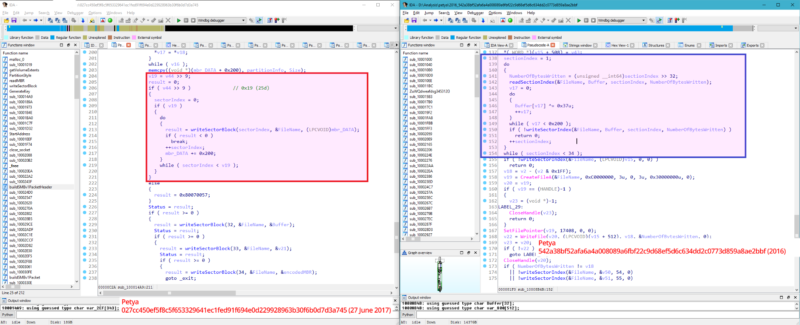
Enlarge / Code in Tuesday's attack, shown on the left, was altered to permanently destroy hard drives. (credit: Matt Suiche)
Tuesday's massive outbreak of malware that shut down computers around the world has been almost universally blamed on ransomware, which by definition seeks to make money by unlocking data held hostage only if victims pay a hefty fee. Now, some researchers are drawing an even bleaker assessment—that the malware was a wiper with the objective of permanently destroying hard drives.
Initially, researchers said the malware was a new version of the Petya ransomware that first struck in early 2016. Later, researchers said it was a new, never-before-seen ransomware package that mimicked some of Petya's behaviors. With more time to analyze the malware, researchers on Wednesday are highlighting some curious behavior for a piece of malware that was nearly perfect in almost all other respects: its code is so aggressive that it's impossible for victims to recover their data.
In other words, the researchers said, the payload delivered in Tuesday's outbreak wasn't ransomware at all. Instead, its true objective was to permanently destroy as many hard drives as possible on infected networks, in much the way the Shamoon disk wiper left a wake of destruction in Saudi Arabia. Some researchers have said Shamoon is likely the work of developers sponsored by an as-yet unidentified country. Researchers analyzing Tuesday's malware—alternatively dubbed PetyaWrap, NotPetya, and ExPetr—are speculating the ransom note left behind in Tuesday's attack was, in fact, a hoax intended to capitalize on media interest sparked by last month's massive WCry outbreak.